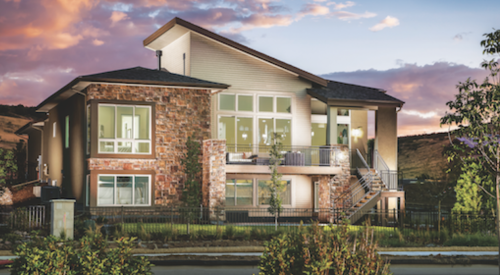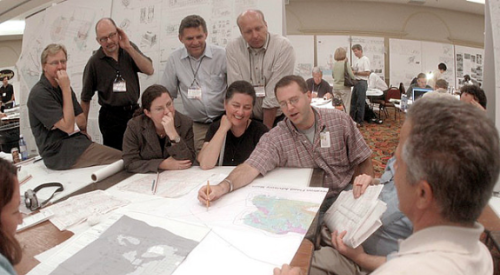PB: Your name has long been associated with New Urbanism and traditional neighborhood design. How did you become a TND developer?
PK: My transformation began when I was invited into a partnership to build a TND community in Iowa City, Iowa, by a developer/builder team based in Michigan. The project was initiated by the city, which wanted a New Urbanist development. I was brought on board for my knowledge of TND and marketing expertise. It was a good opportunity to test the theories I had been touting as a consultant for several years.
What did you learn once you got on the builder/developer side?
It’s really easy to berate builders and developers, but when you’re actually in that seat, it’s different. As a businessperson, you don’t necessarily have all the time or inclination to do all those things consultants tell you. Many consultants do what I call “bringing disaster to your doorstep.” They’re great at identifying the problems, but when you’ve got 16 other fires to put out, it’s hard to put out a 17th.
So what is your role at the Peninsula Neighborhood in Iowa City?
I was involved in the marketing — mostly branding and imaging. I laid a lot of the early groundwork and selected consultants, but our on-site staff executed the actual program.
I am not a managing partner but am one of two nonvoting partners there for our expertise. But in that role I definitely got a closer view of the action. As a partner with a stake in the ultimate success of the project, you really feel the impact of problems caused by delays with utilities, building trades, zoning codes, those kinds of things.
What’s an example of something you came to see differently as a practitioner?
What really surprised us, working in a small town like Iowa City, is the power of the Realtors. They were a united front. We hired our own agent and set up centralized marketing, and the other agents stayed away in droves. They might have privately admired our project, but they simply weren’t going to support us going it alone. We needed to work through them.
What did you do?
We called the best three or four Realtors in town and gave them all listings, and the attitude toward the project changed considerably. What we now need to do is craft a marketing program that enables the real estate agents to carry our message to the market.
One of the great advantages to TND is that it makes use of this fabulous sales force that’s already out there, organized and ready to sell your product — resale agents. The dynamics of sales in a new home community with fairly cookie-cutter models are very different from those in a resale community, and in many ways the complexity of TND is more like a resale community. You might have seven or eight builders, each with seven or eight different models. The sales agent needs to sort that out for the buyer and really understand the buyer’s situation to advise the best choice. Resale agents are actually quite good at that.
Peter Katz was the founding executive director of the Congress for the New Urbanism, a multidisciplinary group aimed at helping development move from sprawling suburbs to more cohesive neighborhoods. Katz is a professor-in-practice in the Department of Urban Affairs and Planning at Virginia Tech’s Alexandria Center.












